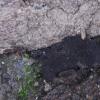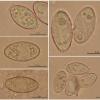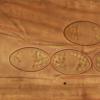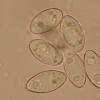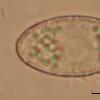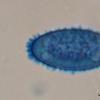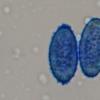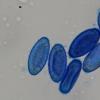
20-12-2025 23:08
Patrice TANCHAUDBonsoir, récolte sur sol sablonneux dans l'arri�

21-12-2025 09:32
Hello.A tiny ascomycete found embedded in wood in

20-12-2025 15:47
Mirek GrycHi.These grew on pine wood that was heavily covere

18-12-2025 21:17
Pol DebaenstThe identification took me to Byssonectria deformi

15-12-2025 07:09
 Danny Newman
Danny Newman
indet. Rutstroemiaceae sp. on unk. fallen leavesMc

19-12-2025 10:10
Patrice TANCHAUDBonjour, récolte réalisée en milieu dunaire, a

18-12-2025 17:23
 Bruno Coué
Bruno Coué
Bonjour,je serais heureux d'avoir votre avis sur c
Little black Peziza (apiculate)
Zuzana Sochorová (Egertová),
27-08-2024 17:12
 Hello,
Hello,I would like to consult this little Peziza, which macroscopically resembles Plicariella scabrosa (especially when young).
There were 3 apothecia, 3.5-8.5 mm in diam., black, with a rough outer surface.
Ascospores (17) 18.6-21.2 (22.9) × (10.1) 10.3-11.6 (12.6) µm, Q = (1.6) 1.7-2; n = 32, Me = 19.8 × 10.8 µm; Qe = 1.8 (without orn.), ellipsoid to subfusoid, uninucleate. Ornamentation very variable, consisting of warts which partly anastomose; the poles are sometimes multiapiculate, spiny, or with ornamentation resembling a fish fin, while sometimes the warts are not higher than elsewhere on the spore surface. The height of polar ornamentation is mostly 0.5-1.5 µm, rarely up to 2.7 µm. I have never observed a spore with a single large apiculus, typical for Peziza apiculata.
Czech Republic - Moravia, 25 August 2024, on soil near a brook, on calcareous background (together with Melastiza flavorubens).
The best option I have found is Phaeopezia vagneri, but the spore size given in literature is somewhat larger. What do you think?
Zuzana
Nicolas VAN VOOREN,
27-08-2024 17:50

Re : Little black Peziza (apiculate)
I think Phaeopezia vagneri is the best hypothesis.
Zuzana Sochorová (Egertová),
27-08-2024 18:19

Re : Little black Peziza (apiculate)
Great, thank you very much for confirmation!



